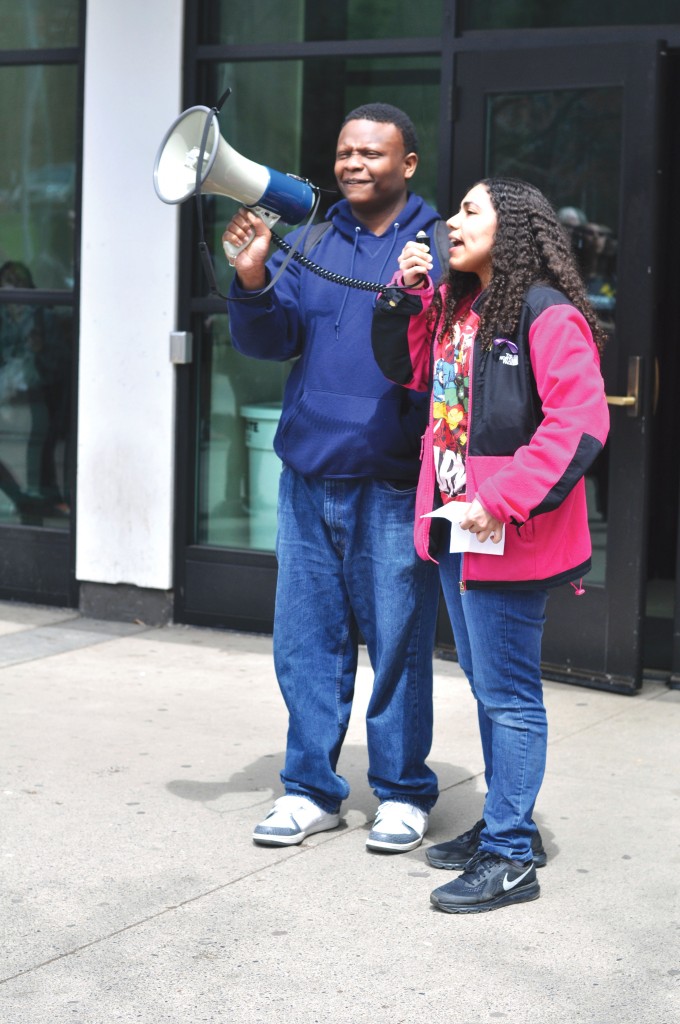
On April 12, Baltimore resident Freddie Gray died while in police custody, setting off weeks of protesting in the area and across the country. On May 1, dozens of students at Binghamton University gathered to rally for the people of Baltimore.
Organized by Students for Change (SFC), the march around campus was open to all students and was designed as a response to recent accusations of police brutality.
According to Epiphany Munoz, a member of SFC and a sophomore double-majoring in sociology and Latin American and Caribbean Area studies, the protest was about more than just Freddie Gray.
“We felt it’s our obligation to show solidarity,” Munoz said. “The people in Baltimore have been being oppressed for decades; what we are seeing right now on the media is just a result of that oppression.”
Students gathered in front of the Old University Union at noon, and walked across the Spine and through the Marketplace. Throughout the march, people shouted chants, including “All night and all day, we do this for Freddie Gray” and “Resistance is justified when people are occupied.”
The demonstration concluded in the Tillman Lobby after about 20 minutes of marching, where the protesters performed a “die-in.” They laid on the floor for four minutes and 32 seconds to represent the amount of time, in hours, that Michael Brown — the victim of another high-profile shooting — was left on the ground in Ferguson, Missouri before paramedics arrived.
Jermel McClure, a member of the Binghamton Speech and Debate Team and a freshman majoring in political science, said that the demonstration helped inform members of campus about the full story in Baltimore.
“The importance of doing it here is making sure everyone is aware of what’s happening,” McClure said. “Making sure everyone knows that although the media is often showing the negative images of rioting and looting, there are people who are doing this for positive reasons.”
Conversely, Ayal Goldberg, a junior majoring in psychology, was studying in the Marketplace when protesters came through. Although she said she supported their cause, she argued that their means were confusing.
“Had I not known what was going on in Baltimore I would have no idea what they were protesting just because of the nature of their chants and the words they were saying,” Goldberg said. “But I think there are things that need to be fixed and they have every right to draw attention to them.”
The chants were led by Toivo Asheeke, a third-year doctoral candidate studying sociology. He said that protests encouraged bystanders to start thinking about these issues.
“We’re so flooded with so much stuff that we don’t want to pay attention to; so many things that are negative or ‘bring us down,’ or that people don’t want to actually engage in,” Asheeke said. “Whether it’s rape culture on campus, whether it’s black people getting shot down by police, this kind of forces people to at least interrogate it and to engage it in a way that’s maybe not comfortable for them.”
For many of the protesters, this march was an opportunity to raise awareness about an issue that they said everyone should be involved in.
“This is not a Binghamton problem, this is not a white versus black problem,” McClure said. “This is just a national day of solidarity where we’re standing in support of Baltimore and in honor of Freddie Gray, the man who lost his life.”


